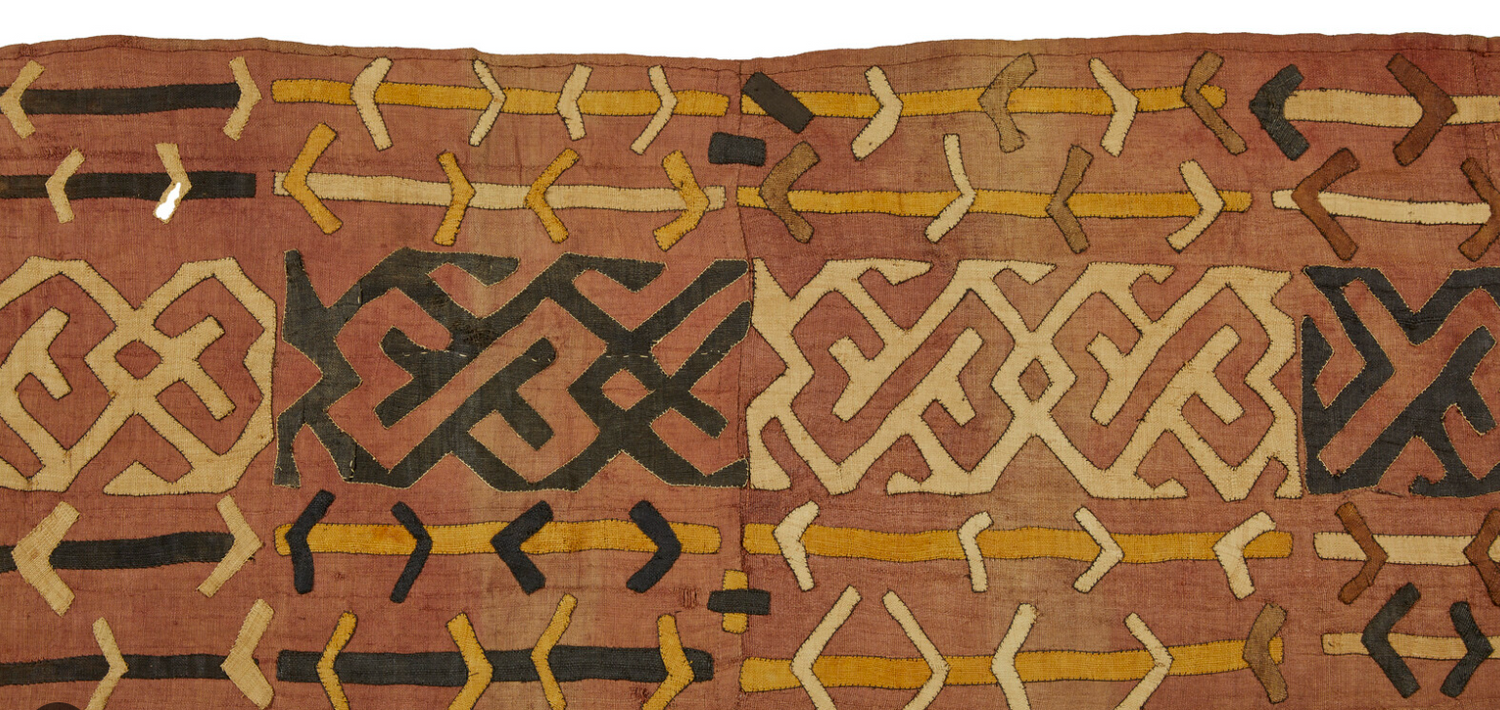Kuba cloth is a striking textile that originates from the Kuba people of the Democratic Republic of Congo, a group known for their artistic skill and symbolic design language. Traditionally made from the raffia palm, the process begins with men weaving the fibers into panels of cloth, which are then handed off to women to embellish using techniques like embroidery, appliqué, patchwork, and dyeing. Each piece can take weeks to complete and is often created for ceremonial use, such as rituals, funerals, or as status symbols worn by nobility. The patterns are deeply symbolic and often intentionally asymmetrical, reflecting a cultural philosophy that embraces imperfection and fluidity.
Historically, Kuba cloth was more than just decorative—it was a form of communication and storytelling. The motifs used in the designs often represent proverbs, historic events, or moral messages passed down through generations. Because each cloth is handmade, no two are alike. The repetition of bold geometric shapes—lines, triangles, circles, and labyrinth-like forms—are both artistic and meaningful. These dynamic designs have captured the attention of collectors, anthropologists, and designers alike for over a century.
In the world of interior design, Kuba cloth has found a new audience as a timeless and textural statement piece. With its warm, neutral tones and rich texture, it adds depth and interest to modern spaces. You’ll often find it used as framed artwork, accent pillows, or draped textiles over beds or sofas. Designers favor Kuba cloth for its ability to blend with both minimalist and eclectic decor styles, adding a layer of authenticity and global influence without overpowering a space. Even a small panel of Kuba cloth brings handcrafted character and a sense of history to a room.
Incorporating Kuba cloth into your home is more than a design decision—it’s a celebration of cultural heritage and artisan tradition. As we continue to seek authenticity in our living spaces, handcrafted pieces like Kuba cloth remind us of the beauty in slow, intentional design. Whether displayed as art or integrated into your textiles, it offers a meaningful way to connect your decor to global craftsmanship and timeless style.



